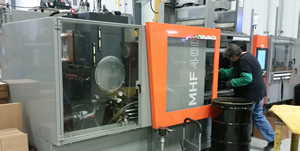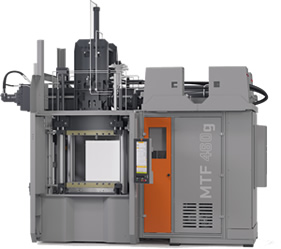
What is Rubber Injection Molding?
Custom rubber molding at Northern Molding begins up front with our customers in the form of project management and in-house collaborative engineering support to identify the correct material and ensure the optimal design of each part.
From there a member of engineering team uses NX to design tooling that delivers the best overall value taking into consideration:
- Customer Specific Requirements (CSR’s)
- Annual usage
- Application
- Tooling budget
- Demolding
- Cycle times
- Desired part appearance
- Secondary operations

We have 16 injection presses that range from 40 tons to an 800 ton press with a 40” x 40” platen. These press manufacturers include Maplan, Pan Stone and REP.
Typical materials molded are Chloroprene, Nitrile, Ethylene Acrylic, Natural rubber, Styrene Butadiene, Ethylene Propylene Diene Monomer (EPDM), Nitrile + Polyvinyl Chloride and Polyacrylate rubber.

Northern Molding also has the ability to produce rubber-to-metal bonded molds and parts!
Some of the custom molded rubber parts produced include:
- Boots
- Bellows
- Air intake hoses
- Mounts
- Bushings
- Door grommets
- Sleeves
- Grommets
- Plugs
- Gaskets and seals
- Bumpers
- Hood seals
Advantages of Rubber Molding?
1. High level of automation
2. Fast, high quantity production
3. Reduced cycle time
4. Air entrapment is significantly reduced
5. No complex preform is needed
6. Cure temperatures used can be much higher than those used for compression or transfer molding
7. Reduced waste where the flashed material is significantly reduced or eliminated.
8. Reduction in backrind because the temperature of the compound entering the cavity is closer to the molding
9. Reduction in manual labor
10. Preheating the compound in the screw before it enters the cavities allows the material to flow more easily into the cavities.

